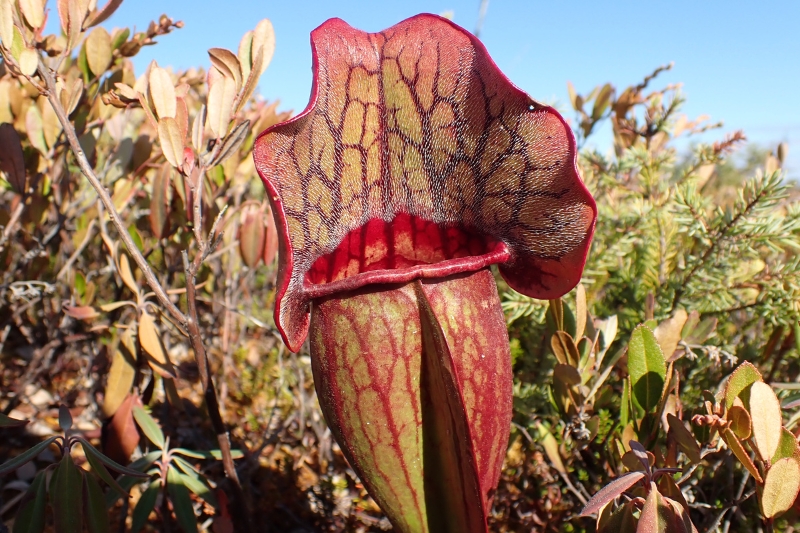
Wetland ecosystem
Kouchibouguac National Park
Set against the backdrop of Kouchibouguac National Park, the freshwater wetland ecosystem unfolds, comprising a mosaic of bogs, fens, marshes, and swamps that weave through about one third of the park's total area. This watery expanse fosters a rich tapestry of life, illustrating the intricate connections between the diverse flora and fauna inhabiting these unique habitats.
Amidst this lush wetland environment, peat moss (Sphagnum species) carpets the ground, providing a spongy foundation. The Northern Pitcher Plant (Sarracenia purpurea) stands as a captivating sentinel, utilizing its modified leaves to capture insects, while the graceful fronds of the Cinnamon Fern (Osmundastrum cinnamomeum) gently sway, enhancing the wetland's biodiversity.
The moose (Alces alces) gracefully traverses the wetland terrain, a symbol of the ecosystem's vitality. Overhead, the melodious trill of the Palm Warbler (Setophaga palmarum) adds a vibrant avian dimension, while the resourceful Northern Raccoon (Procyon lotor) navigates the water's edge in search of sustenance. Sweetgrasses (Hierochloe odorata) infuse the wetland air with a delicate fragrance, adding to the sensory experience.


However, the tranquility of these freshwater wetlands faces a threat from the Purple Loosestrife (Lythrum salicaria), an invasive species. With its striking purple spires, this invasive plant can overpower native vegetation, disrupting the delicate balance of the wetland ecosystem. Diligent efforts to manage and control the spread of Purple Loosestrife are essential to preserving the integrity of these vital habitats.
Within this intricate tapestry of wetlands, certain species find themselves categorized as species at risk. The Maritime Shrew (Sorex maritimensis), a diminutive and elusive mammal, contends with challenges in its wetland habitat, necessitating focused conservation efforts. Similarly, the Black Ash (Fraxinus nigra), an integral tree species to the wetland ecology, is designated as a species at risk, underscoring the importance of protective measures to ensure its survival.
In summary, the freshwater wetland ecosystems of Kouchibouguac National Park unfold as a captivating narrative of interconnected life. From the ubiquitous peat moss to the regal moose, and the delicate Palm Warbler to the resilient Black Ash, each species contributes uniquely to this flourishing ecosystem. Yet, challenges from invasive species like Purple Loosestrife emphasize the ongoing need for conservation efforts, further highlighting the park's commitment to safeguarding the distinctive biodiversity thriving within these watery expanses.
Related links
- Date modified :